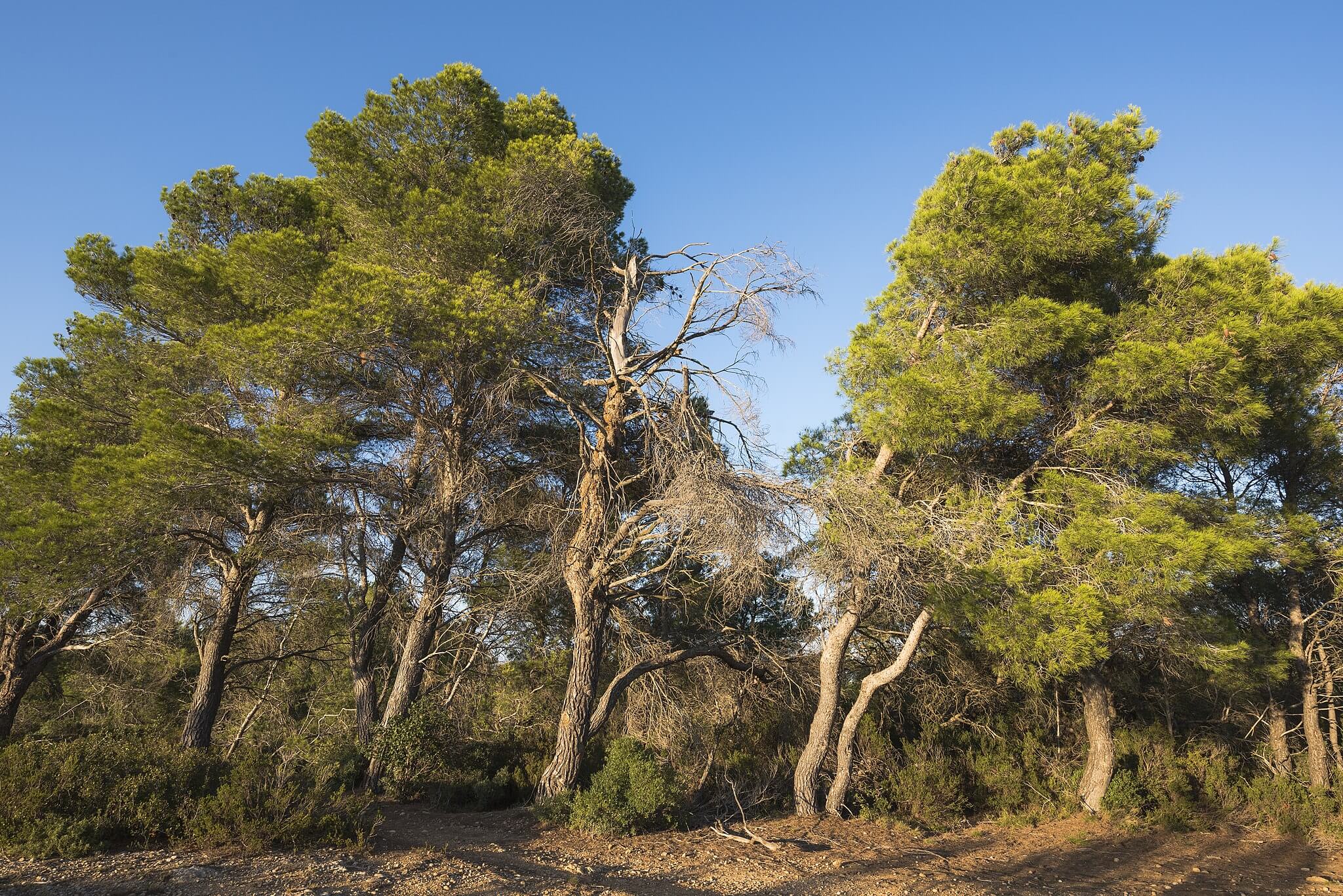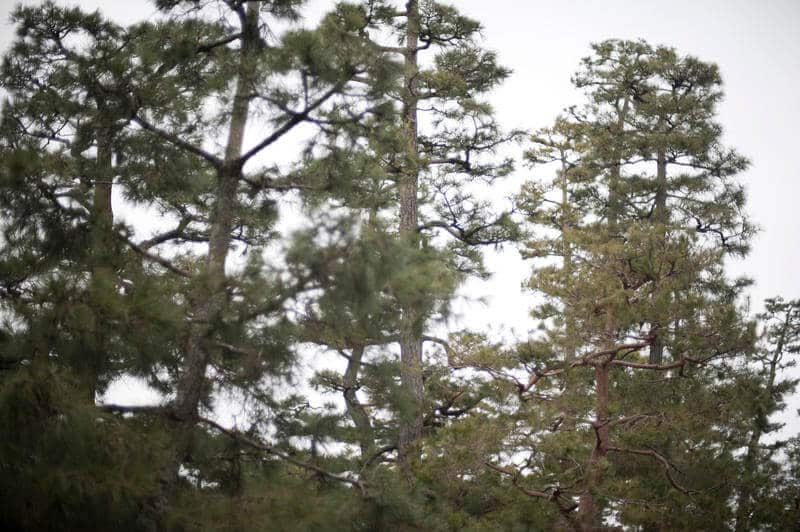A new Israeli study found that low density in forest plots helps trees fix more carbon dioxide and thus contribute to the fight against the climate crisis
By Yael Mor, Angle, Science and Environment News Agency

The custom most associated with the holiday of Tu Bashvet is of course the planting of trees: every year, crowds of Israelis go out to plant young saplings throughout the country as a symbol of renewal and growth. In recent years, another meaning has been added to the custom - the fight against the climate crisis.
Trees, and forests in particular, are a very important factor in curbing the climate change process due to their ability to fix atmospheric carbon and store it for a long time in the tree trunk and branches. As a result, many initiatives and campaigns have been launched in recent decades that set themselves the goal of planting Billions of trees all over the world. In Israel, the afforestation efforts resulted in the planting of hundreds of millions of trees: the Kimat Israel Foundation alone has planted since its establishment About 240 million trees and committed to planting another 6 million trees in the next decade and within the framework of the "Billion Trees" program of the United Nations (UNEP).
Now, according to the findings of a new study by the Weizmann Institute of Science in collaboration with KKL-Junk, it seems that in forest plots with high density the growth rate and carbon fixation rate of the trees is slow compared to those with low density, which raises the question - could it be that there are too many trees in Israel's forests?
The dry forest in Israel
"A green and dense forest enchants us," says Dr. Tamir Klein from the Department of Plant and Environmental Sciences at the Weizmann Institute of Science, one of the leaders of the research, "but too high a density causes strong competition between the trees and delays in growth. Especially in the dry climatic conditions in Israel: because there is not much rain, sometimes the trees compete for water - a scenario in which there are always winners and losers."
The research began about 11 years ago, in the Yatir Forest in the Negev, the largest planted forest in Israel that mainly contains pines, located south of Mount Hebron and east of the Mitar settlement. "In fact, this is the driest forest in Israel," says Klein.
In 2010 Extensive tree mortality was observed in the Yatir forest. According to estimates, around 50 dead trees were identified throughout the forest, after a year of severe drought (2009), in which the Israeli water system reached its worst crisis 85 years And the Negev region was declared a drought affected area. "One of the questions that came up was what would happen if there were less trees: maybe there would be more water for each tree, and maybe the survival rate would increase, and from here we came to the question of our research - what is the optimal density of a forest?" says Klein.
According to Klein, the general density seen in most Yatir forests is 30 trees per acre. "In the lead Prof. Dan Yakir From the Department of Earth and Planetary Sciences at the Weizmann Institute of Science, we did a thinning experiment: we arrived at the plots, marked them and cut down some of the trees to gain space and to produce different densities. We proactively reduced the number of trees in some of the plots to 20 trees per dunam and in some we reduced to 10. We wanted to see how it would affect the remaining trees."
To measure the effect, the researchers installed sensors on the trees that measure the diameter of the trunks, and measured photosynthesis rates using closed measuring cells that measure the concentration of carbon dioxide. In addition, they measured other parameters such as the regeneration of the forest - the amount of pine sprouts, germination and the number of seedlings.
"Already in the first year after we cut down trees in a controlled manner, the first thing we saw was that the trees we left behind 'breathed a sigh of relief': their growth rate doubled and even tripled," says Klein. "This is a phenomenon that you see many times and that occurs because trees compete with each other for water and light."
Competition for light
According to Klein, the removal of competition could be expected to increase the water supply to the remaining trees. However, combining the measurements with an eco-hydrological model by Prof. Naomi Teig from the University of California, showed that the competition for light is the main factor in the success of the thinning: without the neighboring trees that shaded them, the remaining trees were able to increase the rate of carbon fixation and grow faster.
According to KKL-Junk, the forests in Israel absorb about one million tons of carbon per year (equivalent to 3.7 tons of carbon dioxide): carbon fixation is part of the photosynthesis process, in which algae and plants use solar energy, water and carbon dioxide to produce sugars and carbohydrates. Carbon fixation by terrestrial and marine photosynthetic organisms is also the main process in the world today that reduces the levels of carbon dioxide in the atmosphere and slightly balances the steep increase in the concentration of carbon dioxide due to human activity, primarily the burning of fossil fuels.
In the study, the researchers saw that the diameter of the tree trunks in the thinned plots increased more than those in the dense plots and also saw that their needles were longer - a clear sign of increased carbon fixation. "We saw that the reason for the increased growth in the thinned plots is that they do not have neighboring trees that shade them. In other words, they are illuminated for longer periods than during the day and because of this they perform increased photosynthesis and are able to fix more carbon", says Klein.
Besides the measurements of the diameter of the tree trunk and the length of the leaves, the researchers also measured the carbon fixation directly "we measured with a device that closes on the leaves the amount of carbon they absorb from the environment and fix. We used a type of measuring cell that closes the carbon in the leaf's environment and has an infrared sensor that can count carbon dioxide molecules. As soon as we put the living leaves - that is, the leaves that remained attached to the tree - into the measuring chamber, the sensor showed that the carbon dioxide was running out at a rapid rate. We saw that the rate of carbon consumption was higher in the thinned plots than in the dense ones."

Trees are stronger
The researchers have returned to Yatir Forest every year for the past 11 years, as part of an experiment carried out as part of a network of Long-Term Ecological Research Stations (LTER). "We can say that even after 11 years, the phenomenon is only getting stronger. Today, a gap has already opened between the trees that are in the thinned plots and the trees that grow in the dense plots - in the sparse plots the trees are much stronger than the trees in the dense plots."
So should we start cutting down trees? It seems that we can wait a moment with the axes. Although the researchers found the optimal forest density, as of today it is not possible to implement their recommendation to thin the existing forests. "We recommend to KKL-Junk to thin out plots, but logistically it is very expensive and complicated to implement," says Klein. "The forests in Israel are not necessarily close to the roads, and in order to thin them, you have to send people into them with saws and then remove the felled trunk - this is a complicated operation."
In the case of new plantings, the researchers recommend not planning them too densely and taking into account the effect of density on tree health, so that the new trees have more space and resources to grow, thrive, fix more carbon and help mitigate the climate crisis.
More of the topic in Hayadan:
